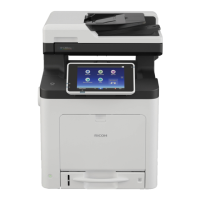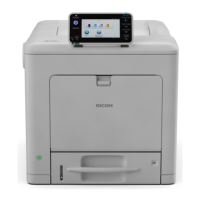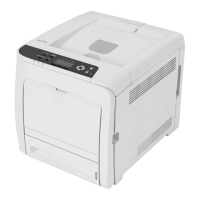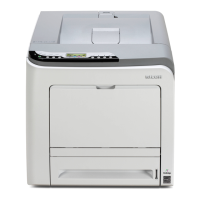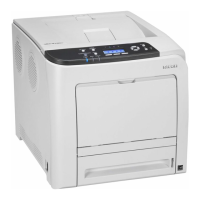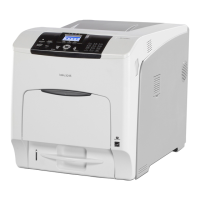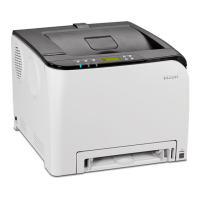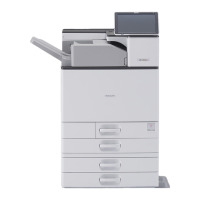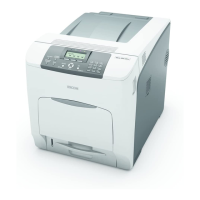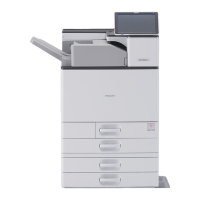3. Click the [Drivers] tab, and then click [Add].
4. Click [Next].
5. Check the [x64] (64 bit) or [X86] (32 bit) check box, and then click [Next].
6. Click [Have Disk...].
7. Click [Browse...], and then select the printer driver location.
If the CD-ROM drive is D, the source files of the printer driver are stored in the following locations:
• PCL 5c
32-bit driver D:\X86\DRIVERS\PCL5C\X86\(Language)\DISK1
64-bit driver D:\X64\DRIVERS\PCL5C\X64\(Language)\DISK1
• PCL 6
32-bit driver D:\X86\DRIVERS\PCL6\X86\MUI\DISK1
64-bit driver D:\X64\DRIVERS\PCL6\X64\MUI\DISK1
• PostScript 3
32-bit driver D:\X86\DRIVERS\PS\X86\MUI\DISK1
64-bit driver D:\X64\DRIVERS\PS\X64\MUI\DISK1
For details about the languages supported in the printer drivers, see page 22 "Supported
languages".
8. Click [OK].
9. Select the manufacturer and model name of the printer you want to use, and then click
[Next].
10. Click [Finish].
11. Click [Close] to close the print server properties window.
12. Click [Add a Printer] on the [Devices and Printers] window.
13. Click [The printer that I want isn't listed].
14. Click [Next].
15. Select the printer you want to use, and then click [Next].
• To cancel the installation of the selected driver, click [Cancel] before the installation is complete. To
install the WSD Port again, right-click the printer's icon in the [Network] window, and then click
[Uninstall].
Using Windows Print Server
1. Click [PCL Printer Drivers] or [PostScript 3 Printer Driver] on the installer screen.
Installing the Printer Driver for a Network Connection
31

